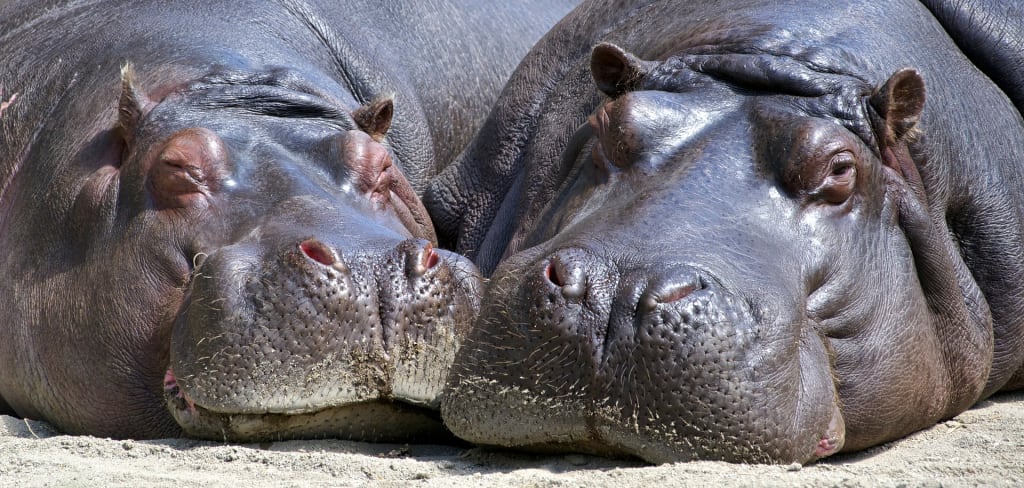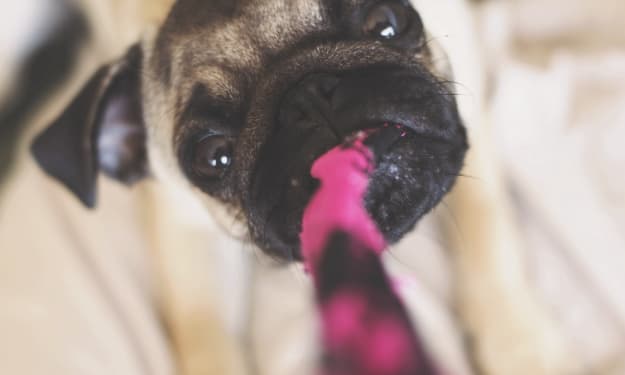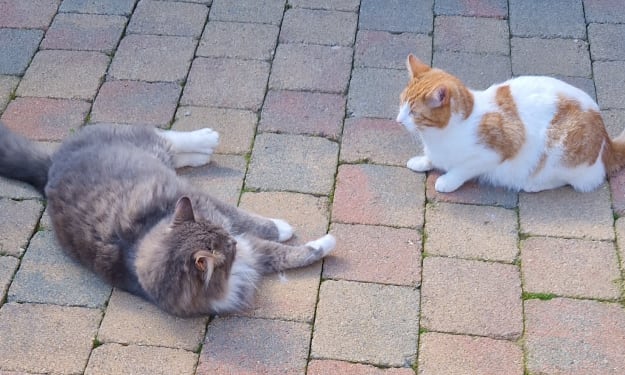Pablo Escobar Once Owned 4 Hippos: They’ve Since Multiplied Into a 100+ Wild Herd
Descendants of Escobar’s original hippos have been legally recognized as people by a U.S. Court in Ohio

They once lived in drug lord Pablo Escobar’s private zoo. Now, dubbed the “cocaine hippos,” these 4,000-pound animals roam freely in Columbia along the Magdalena River.
Although many locals are fond of the hippos and they are a draw for tourists, scientists are concerned regarding the damage they’re inflicting on the natural environment, including pollution of the local waterways. Also, occasionally, the hippos have been known to attack humans.
A recent study predicts if nothing changes, the hippo population in the area could reach 1,500 by 2040, which would be disastrous for local wildlife.
How it all began
Infamous Colombian drug lord, Pablo Escobar, kept a private zoo on his estate filled with exotic animals such as zebras, hippos, and giraffes. Most of the animals were relocated after his death in 1993.
For reasons unknown, the original four hippos were not relocated, but instead, were set free to roam the countryside of Colombia.
And roaming Colombia is just what they did. These four hippos have spawned a wild herd of 120 hippos rambling about the river near Escobar’s former estate. With no natural predators in the area, the hippos have thrived and multiplied.
You may think of hippos as docile creatures that don’t cause much trouble, but this would be wrong.
Hippos aren’t always peaceful
According to National Geographic, hippos are plant-eaters that usually don’t bother other animals. However, male hippos will behave aggressively when threatened. And mother hippos are particularly protective of their young. Hippos can run at speeds of up to 20 miles per hour with jaws that can clamp down ten times that of the force of a human jaw.
“Every year across Africa, hippos kill an estimated 500 people, making them the world’s deadliest mammal, after humans, and nearly twice as deadly as lions.” — National Geographic
According to an AP News article, local Álvaro Molina was attacked by a “cocaine hippo” while fishing in a boat in the river. He believes it was a female hippo that had just given birth, and he doesn’t hold it against her. He told the reporter that he supports letting the hippos remain in the area.
Damaging to the environment
Aside from the occasional attacks on humans, the hippos in Columbia have caused massive damage to the environment. They feed at night and can eat large amounts of crops.
They also compete for resources with native species such as the capybara and manatee. The capybaras (a large guinea pig-like creature) feed on grasses and fruits, which are being eaten by the hippos at a staggering pace. And the peaceful river manatees are in danger of being crowded out by the more aggressive hippos.
Nobody will take the hippos
Officials from the city of Puerto Triunfo have tried to no avail to rehome the hippos. There are just too many of them. Zoos have remained uninterested, and no African nation wants to risk threatening their native population of hippos by bringing in hippos of unknown origin that have been roaming free in Columbia for decades
Hippos as “legal persons”
Officials in Columbia have considered sterilizing the hippos and even culling some of the herd. In response, an American animal organization went to federal court to seek non-lethal methods to control the population. The U.S. District Court for the Southern District of Ohio granted the request, and now the hippos are recognized as “legal persons” in the U.S.
Invasive species
However, being “legal persons” with rights in the U.S. doesn’t apply when in Columbia. Columbian officials have declared the hippos to be an exotic invasive species.
Although currently, a Colombian judge has ordered a stop to prevent the hunting and killing of the hippos.
Columbian officials are looking into different forms of birth control to prevent the hippos from breeding to let them live out their lives without creating more hippos. But they haven’t ruled out killing the hippos if these methods don’t work.
What’s next?
Sadly for the hippos, they don’t realize they’re a problem to their environment. They’re just out there living their hippo lives.
The damage was done when the first four hippos were removed from their native environment and brought to Colombia. Then they were left alone to roam and multiply. And now there are hundreds of them.
Further, efforts to sterilize the hippos are likely to be costly and complex. The hippos are now living spread out along the Magdalena River, which is 956 miles long.
Hopefully, a humane answer for the hippos can be found. Kathy Hessler, professor, and director of the Animal Law Clinic at Lewis & Clark Law School in Portland, Oregon, told Bloomberg Law,
“The people in the community have grown to love these animals and spoke out on their behalf. It just shows that we do want to have relationships with animals, and we can try to find ways to do that in a positive way.”
A previous version of this story was originally published on Medium.
About the Creator
Jennifer Geer
Writing my life away. Runner/mama/wife/eternal optimist/coffee enthusiast. Masters degree in Psychology.






Comments
There are no comments for this story
Be the first to respond and start the conversation.